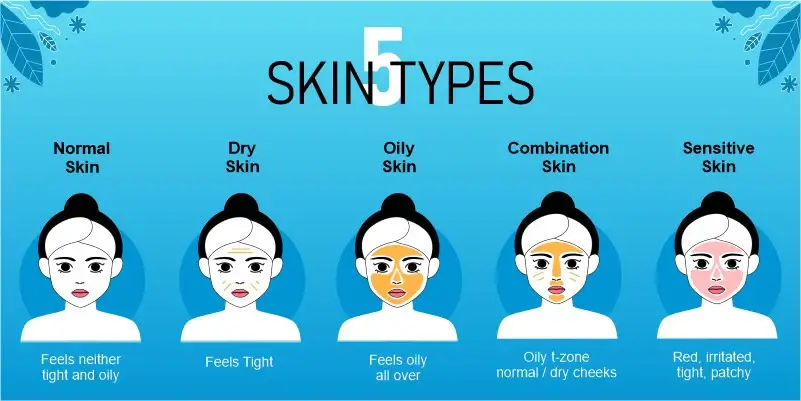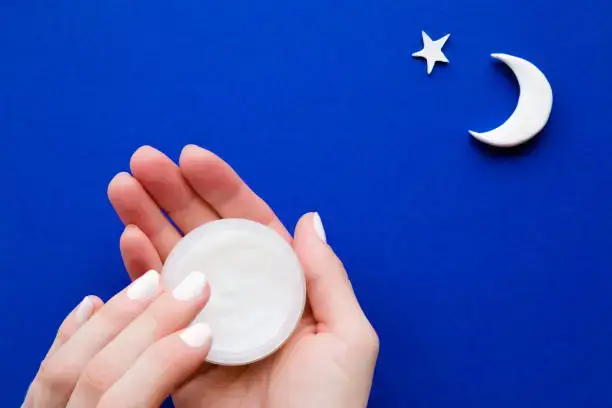We envision a world where everyone has the tools and knowledge to live a balanced, healthy, and fulfilling life. By providing reliable resources, personalized programs, and community support, we aim to be a beacon of hope for those on their health journey.
Table of Contents
Introduction to Skin Care

skin care routine steps
A well-structured skin care routine is essential for maintaining the health and appearance of your skin. This regimen involves a series of steps and products specifically chosen to address individual skin types and concerns. By adhering to a consistent routine, individuals can enhance their skin’s resilience and overall vitality. Skin Care Products; The primary goal of any skin care routine is to cleanse, protect, and nourish the skin, leading to a clearer, more radiant complexion.
Skin types are typically categorized into four main categories: normal, oily, dry, and combination. Normal skin has a balanced moisture level, while oily skin may appear shiny and prone to acne due to excess sebum production. Conversely, dry skin can feel tight and flaky, requiring extra moisture to prevent irritation. Combination skin exhibits characteristics of more than one skin type, often presenting as oily in the T-zone, with dryness in others. Recognizing your specific skin type is crucial, as it guides which products and ingredients will be most beneficial to your skin.
Alongside skin types, individuals may also experience a variety of skin concerns, including acne, pigmentation, sensitivity, and aging. Addressing these issues requires a tailored approach to skin care, as different conditions necessitate unique treatments. For instance, oily skin may benefit from exfoliating toners to manage excess oil production, while dry skin may require more emollient-rich moisturizers for hydration. Thus, an effective skin care routine should be comprehensive and adaptable, ensuring it meets the distinct needs of an individual’s skin.
Ultimately, the importance of a consistent skin care routine cannot be overstated. By committing to regular cleansing, moisturizing, and sun protection, one can significantly improve skin health, mitigate common concerns, and foster a long-lasting, healthy complexion.
Understanding Your Skin Type

Identifying your skin type is a fundamental step in establishing an effective skin care routine. The primary skin types include normal, oily, dry, combination, and sensitive. Each category exhibits unique characteristics, which influence how skin reacts to products and environmental factors. Understanding these differences can help you select the right products and treatments that cater specifically to your individual needs.
Normal skin is generally well-balanced, displaying a smooth texture, even tone, and minimal imperfections. It is less likely to experience sensitivities or breakouts, making it relatively easy to care for. On the other hand, oily skin is characterized by excess sebum production, which can lead to a shiny appearance and increased susceptibility to acne. Individuals with oily skin often benefit from oil-free and non-comedogenic products that regulate sebum production.
Dry skin tends to feel tight, rough, or flaky, and may exhibit redness or irritation. This skin type often requires richer moisturizers that provide adequate hydration and barrier protection. Combination skin presents a unique challenge, as it involves both oily and dry areas, typically characterized by an oily T-zone and dry cheeks. Tailoring a routine for combination skin may involve using different products for various areas of the face.
Finally, sensitive skin is prone to reactions such as redness, itching, or burning, often requiring products with gentle and soothing ingredients. Identifying your specific skin type is crucial, as it informs your choices for cleansers, toners, serums, and moisturizers. Utilizing products tailored to your skin’s unique characteristics minimizes adverse reactions and maximizes the effectiveness of your skin care routine.
Step 1: Cleansing
Cleansing is an essential step in any effective skin care routine. It serves as the foundation for maintaining healthy skin by removing dirt, oil, makeup, and impurities that accumulate throughout the day. Proper cleansing not only prepares the skin for subsequent treatments but also prevents clogged pores and breakouts, making it a crucial aspect of maintaining overall skin health.
There are various types of cleansers available in the market, each formulated to cater to different skin types and concerns. For instance, gel cleansers work well for oily and acne-prone skin due to their oil-controlling properties. Cream-based cleansers, on the other hand, are more suitable for dry or sensitive skin as they offer additional hydration. Foam cleansers provide a light, airy texture perfect for a fresh feel, while micellar water is excellent for a gentle and quick cleanse, especially for those who wear makeup frequently. It is critical to choose a cleanser that aligns with one’s specific skin type to achieve the best results and maintain the skin’s natural barrier.
When it comes to effective cleansing techniques, it is advisable to use lukewarm water rather than hot or cold water to prevent irritation. Massage the cleanser onto the skin using circular motions for at least 30 seconds to ensure thorough removal of impurities. Rinse off completely to avoid residue that could lead to breakouts or irritation. It is recommended to cleanse twice a day; once in the morning to remove sweat and oil, and once in the evening to eliminate the pollutants that accumulate throughout the day. By adopting an appropriate cleansing method and product, individuals can create a solid foundation for their skin care journey and pave the way for healthy and radiant skin.
Step 2: Exfoliation
Exfoliation is a key step in any effective skin care routine, playing an essential role in removing dead skin cells, enhancing the skin’s texture, and promoting cell turnover. This process not only helps to reveal fresher, healthier skin but also allows other skin care products to penetrate more deeply, maximizing their benefits. By incorporating exfoliation into your regimen, you can address common skin concerns such as dullness, uneven tone, and clogged pores.
There are two primary methods of exfoliation: mechanical and chemical. Mechanical exfoliation involves the use of physical tools, such as scrubs or brushes, to manually slough off dead skin cells. This method can be effective, but it requires caution, especially for those with sensitive skin. On the other hand, chemical exfoliation utilizes specific acids or enzymes to break down the bonds holding dead skin cells together, making it a gentler option for most skin types. Common chemical exfoliants include alpha hydroxy acids (AHAs) and beta hydroxy acids (BHAs), each catering to different skin concerns.
The frequency of exfoliation largely depends on your individual skin type. Generally, those with oily or thick skin may benefit from exfoliating up to three times a week, while individuals with dry or sensitive skin should limit this process to once a week. Over-exfoliating can lead to irritation, redness, and increased sensitivity, so it is crucial to listen to your skin and adjust your routine accordingly.
To exfoliate safely, always start with a patch test when trying new products and avoid exfoliating on active breakouts or irritated skin to prevent further damage. Additionally, ensure to follow up with adequate hydration and sunscreen, as exfoliated skin can be more vulnerable to sun damage. By using proper techniques and products, exfoliation can significantly enhance the effectiveness of your overall skin care routine.
Step 3: Moisturizing
Moisturizing is a crucial component of any effective skincare routine, as it plays a significant role in maintaining skin health across all skin types. The primary function of a moisturizer is to hydrate the skin, which is essential for its overall appearance and function. When the skin is adequately moisturized, it appears plumper, smoother, and more radiant, while also ensuring that the skin barrier remains intact and effective at protecting against environmental stressors.
There are various types of moisturizers available, each formulated to suit specific skin types and concerns. Creams tend to be thicker and provide a more intensive level of hydration, making them ideal for individuals with dry or mature skin. Lotions, on the other hand, have a lighter consistency that absorbs quickly and is typically suitable for normal to combination skin types. Gels are another option, offering a refreshing burst of hydration without the heaviness, which makes them an excellent choice for oily or acne-prone skin. Understanding these different formulations allows for more informed choices when selecting moisturizers.
Choosing the right moisturizer is critical, as an inappropriate product can lead to issues such as excessive oiliness, dryness, or even breakouts. One should consider factors such as skin type, hydration needs, and any specific conditions, such as sensitivity or the presence of acne. Additionally, it’s beneficial to look for ingredients that actively promote hydration, such as hyaluronic acid, glycerin, and ceramides. Overall, incorporating a suitable moisturizer into your daily skincare regimen not only enhances skin hydration but also strengthens the skin barrier, paving the way for a healthier and more resilient complexion.
Step 4: Sun Protection
Sun protection is a crucial component of an effective skin care routine, particularly in preventing skin damage and premature aging. The sun emits ultraviolet (UV) radiation, which is primarily responsible for skin concerns such as sunburn, hyperpigmentation, and the accelerated appearance of fine lines and wrinkles. Utilizing sunscreen is an essential measure to mitigate these harmful effects.
Sunscreens function by absorbing, reflecting, or scattering UV radiation. There are two main types of UV rays: UVA and UVB. UVA rays penetrate the skin more deeply and contribute to skin aging, while UVB rays primarily cause sunburn. Thus, broad-spectrum sunscreens, which protect against both UVA and UVB rays, are highly recommended. When selecting a sunscreen, it is important to pay attention to the Sun Protection Factor (SPF) rating. SPF indicates the level of protection from UVB rays and reflects the time it would take for skin to redden in the sun while using the product compared to not using it at all. An SPF of 30 or higher is generally advised for daily use.
In addition to using sunscreen, several protective measures can enhance your defense against UV exposure. Wearing protective clothing, seeking shade during peak sunlight hours, and using wide-brimmed hats can further minimize the risk of sun damage. It is also wise to reapply sunscreen every two hours, especially after swimming or sweating, to maintain effective protection. Incorporating sun protection into your daily skincare routine is vital, as consistent application is key to safeguarding the skin from adverse effects.
By prioritizing sun protection, individuals can significantly reduce their risk of skin-related issues and promote healthier, more youthful skin over time.
Step 5: Targeted Treatments
In the realm of skin care, targeted treatments serve as essential solutions designed to address specific skin concerns effectively. These treatments encompass a variety of products, including serums, spot treatments, and masks, each tailored to tackle issues such as acne, wrinkles, and hyperpigmentation. Understanding how to incorporate these treatments into a skin care routine can enhance overall effectiveness and skin health.
Serums are highly concentrated formulations filled with active ingredients, aimed at penetrating deep within the skin. Depending on the concern, one may choose a serum containing salicylic acid for acne-prone skin, hyaluronic acid for dryness, or vitamin C for brightening hyperpigmentation. To optimally integrate a serum, it is recommended to apply it after cleansing and toning the skin, allowing for maximum absorption and efficacy.
Spot treatments are designed for localized application, providing a targeted solution for specific problem areas. best skin care routine; For instance, those experiencing breakouts can utilize a spot treatment with benzoyl peroxide, which addresses acne directly at the source. best skin care routine; It is essential to use such treatments sparingly and only on affected areas to avoid over-drying healthy skin. best skin care routine; These treatments can be applied both day and night, although some users may prefer nighttime use to allow for uninterrupted skin recovery.
Masks can complement a skin care regimen by offering additional benefits tailored to specific concerns. Clay masks, for instance, are excellent for oily skin types, drawing out impurities and excess oil, while hydrating masks benefit those with dry or lackluster skin. best skin care routine; Incorporating masks into a weekly routine—generally once to twice a week—can promote overall skin clarity and address multiple issues simultaneously.
By effectively utilizing targeted treatments, individuals can create a personalized skin care routine that not only addresses current concerns but also supports long-term skin health. best skin care routine; Each product plays a pivotal role in enhancing the overall appearance of the skin when integrated thoughtfully.
Bonus Step: Night Care Routine

In the realm of skin care, nighttime routines play a vital role in maintaining healthy skin. best skin care routine; While our daytime regimen primarily focuses on protecting our skin from external aggressors such as UV rays and environmental pollutants, a night care routine provides an opportunity for repair and regeneration when the skin is most receptive. best skin care routine; During sleep, the body undergoes numerous restorative processes, making this an ideal time for intensive treatments.
A basic night care routine typically begins with gentle cleansing. best skin care routine; It is essential to remove any makeup, dirt, and excess oil accumulated throughout the day. best skin care routine; Using a mild cleanser ensures that the skin retains moisture while eliminating impurities. best skin care routine; Following cleansing, applying a toner can help to balance the skin’s pH levels and prepare it for subsequent products.
The next critical step is the application of targeted treatments. best skin care routine; This could include serums rich in active ingredients such as retinol, hyaluronic acid, or peptides. best skin care routine; These components are known to promote cell turnover, enhance hydration, and reduce the appearance of fine lines. best skin care routine; It is important to choose products that suit your specific skin type and concerns, whether that be acne, dryness, or signs of aging.
Moisturizing is also an integral part of a night care routine. best skin care routine; Using a thicker, more emollient moisturizer compared to one used during the day can help to lock in moisture and support the skin’s repair processes overnight. best skin care routine; Additionally, incorporating a nourishing eye cream can address concerns like puffiness and dark circles, which can be exacerbated during the night.
Lastly, while it is often overlooked, ensuring adequate sleep and hydration plays a complementary role in effective skin care. best skin care routine; Prioritizing rest and drinking enough water will further enhance the benefits of your night skin care routine, allowing for fuller rejuvenation and revitalization of the skin while you sleep.
Tips for Maintaining Consistency
Establishing and maintaining a best skin care routine can often be challenging, yet it is essential for achieving optimal skin health. best skin care routine; One of the most effective ways to ensure consistency is to create a dedicated schedule for your skin care regimen. best skin care routine; This involves designating specific times during the day, ideally morning and evening, to perform your skin care tasks. Incorporating these rituals into your daily schedule can help solidify them as non-negotiable habits.
Furthermore, tracking your progress is another crucial component of maintaining consistency in your skin care routine. best skin care routine; Keeping a journal or utilizing a mobile application can provide insight into your skin’s condition over time. best skin care routine; Documenting changes can also motivate you to stay committed, as you can see firsthand the benefits of your consistent efforts. best skin care routine; Additionally, periodic evaluations of your skin’s response to products can help you make informed decisions and necessary adjustments.
As seasons change, so can your skin’s needs. It is important to adapt your skin care routine accordingly. best skin care routine; For instance, during colder months, your skin may require more hydration or additional moisturizing agents, whereas summer might necessitate lighter formulations. best skin care routine; Being adaptable can prevent potential skin issues and ensure your routine remains effective throughout the year.
Lastly, motivation plays a pivotal role in consistently following through with your skin care regimen. best skin care routine; Setting small, achievable goals—such as trying a new product or completing a week of your routine without missing a step—can foster a sense of accomplishment. best skin care routine; Additionally, engaging with online communities or social media groups dedicated to skin care can provide support and encouragement, reminding you of the significance of maintaining your routine for long-term benefits.
Did You Try this tips ?
There are no reviews yet. Be the first one to write one.
blood work brain health cancer treatment climate health diabetes treatments digestive health disease management disease mapping exercise plan fitness tips hair care hair growth hair treatment health apps health foods health insurance health tips healthy habits healthy recipes heart disease home workouts immune boost immune foods keto plan keto recipes kidney disease lifestyle diseases meal delivery medicine innovation melanoma treatment mental health morning exercise natural remedies non melanoma nutritional advice nutrition assistance raw nutrition skin cancer skin care skin health sleep exercise sleep technology telemedicine services viral threats weight loss
skin care routine steps the best fresh now 1
A well-structured skin care routine is essential for maintaining the health and appearance of your skin. This regimen involves a series of steps and products specifically chosen to address individual skin types and concerns. By adhering to a consistent routine, individuals can enhance their skin’s resilience and overall vitality. Skin Care Products; The primary goal of any skin care routine is to cleanse, protect, and nourish the skin, leading to a clearer, more radiant complexion.








